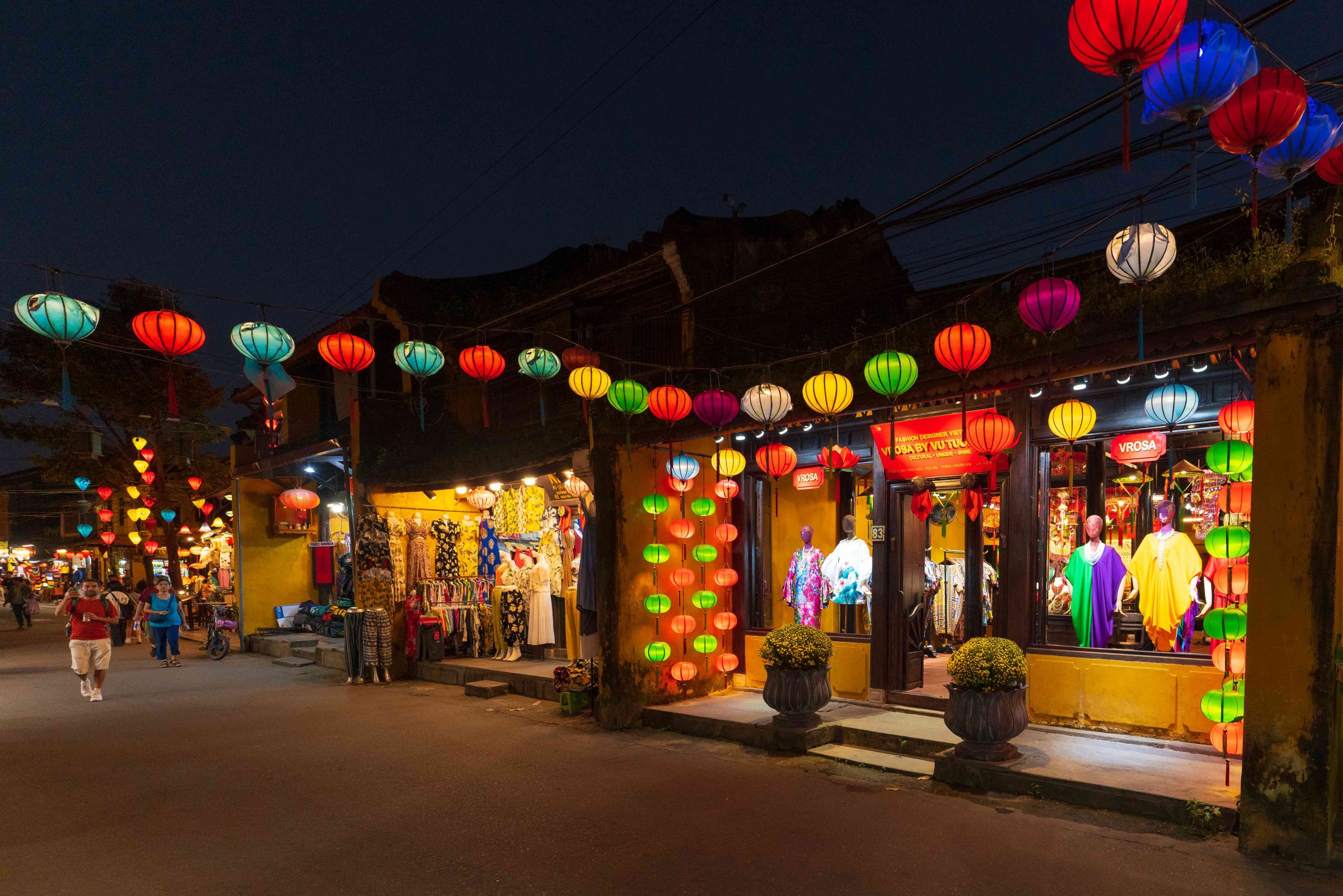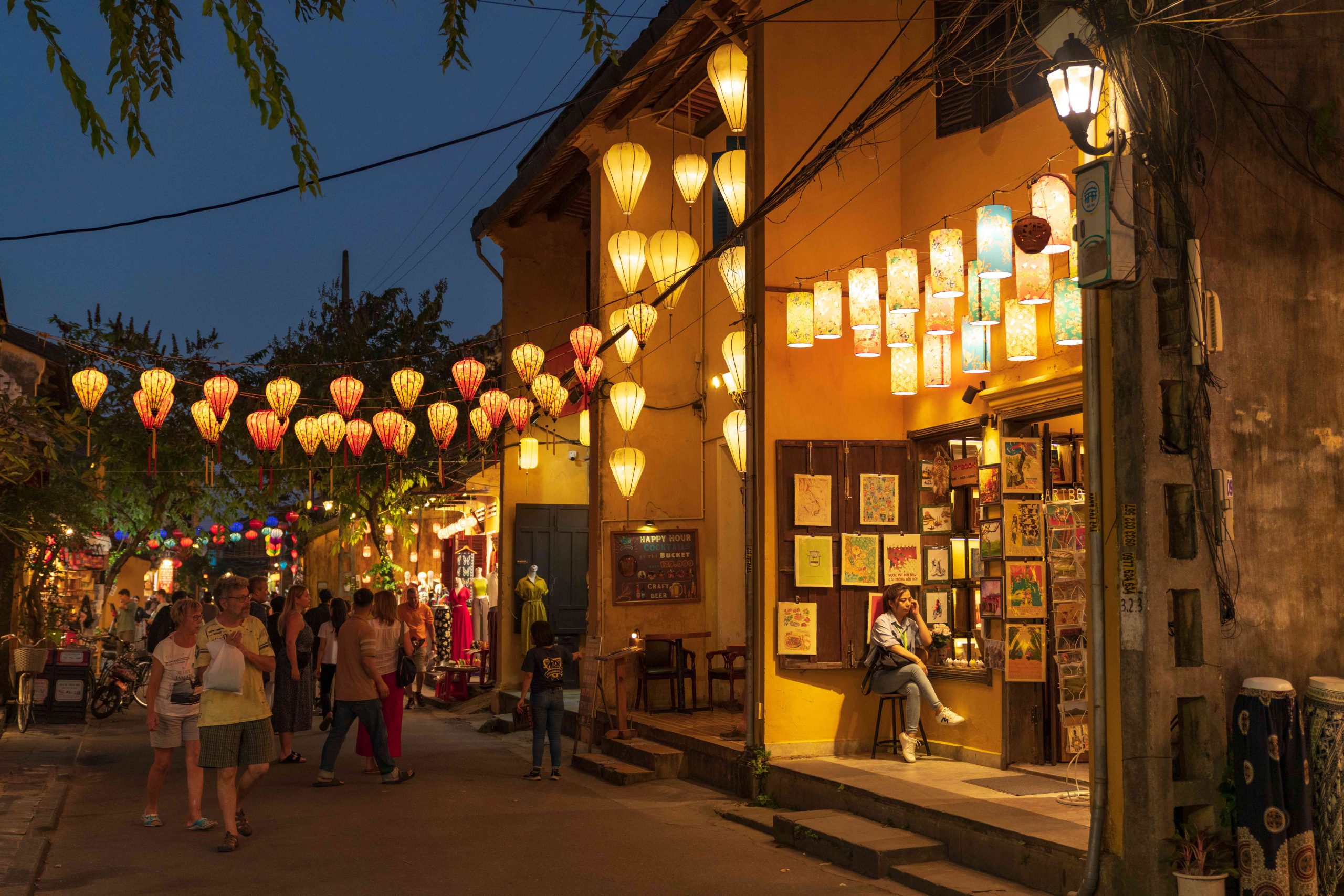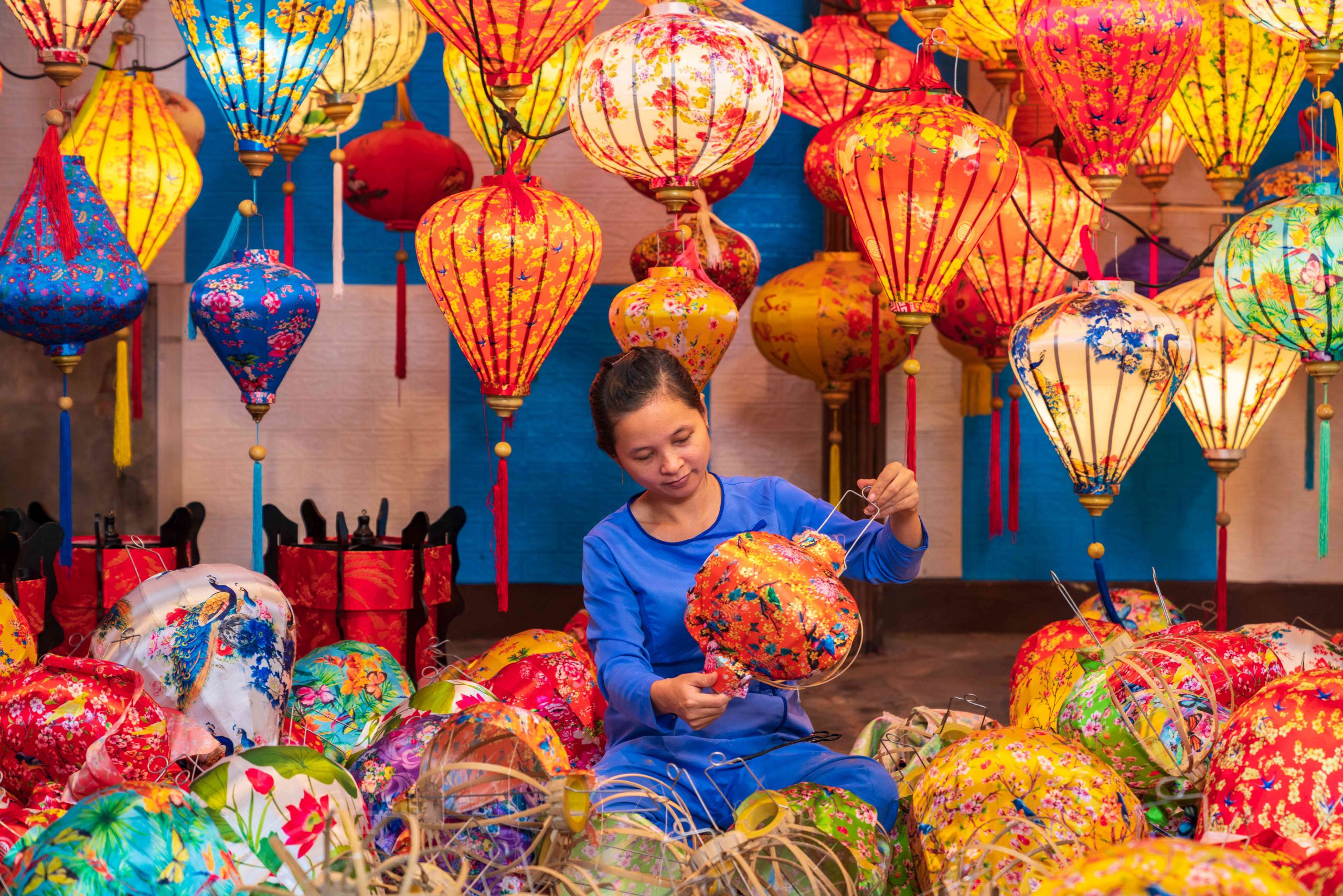Story: Son Tung
Photos: Van Viet
Hoi An in Quang Nam province was one of Vietnam’s busiest trading ports during the 17th and 18th centuries. Located over 30km south of Danang – the largest city in Central Vietnam, Hoi An is a popular and vibrant tourist destination with plenty of traditional culture. The town is not only famous for its ancient houses and moss-covered streets but also for a romantic and mystical symbol: its brightly colored lanterns.

The history and origins of Hoi An’s lanterns are still subject to debate. Some sources suggest that Chinese immigrants who moved to Hoi An in the 16th and 17th centuries brought lanterns to hang in front of their homes to ease their homesickness. However, some locals claim that lanterns have been popular here for even longer, associated with the ancestral lantern-making craft of the father of the trade named Xa Duong. Initially, lanterns were used only during festivals and important events to show reverence to the deities. Gradually, lanterns became a familiar decorative item in every household, adding warmth and charm to the ambience.
The art of lantern-making
Hoi An’s lanterns are handcrafted from bamboo and silk. The bamboo frame is meticulously bent and shaped, then covered with a delicate layer of colorful silk. Thanks to artisans’ skilled hands, the lanterns come in many forms: cylindrical, spherical, and hexagonal, and in shapes resembling pumpkins, garlic bulbs, dragons, fish, and more. Each design boasts its own unique beauty.
Hoi An’s lantern-making craft has existed for over 400 years and is honored as one of Vietnam’s most exemplary traditional crafts. Creating a Hoi An-style lantern involves three main steps: shaping the frame with bamboo strips, cutting and attaching the silk fabric to the frame, and finally, painting and decorating the lantern. The frames are made from mature bamboo that’s at least five years old. To treat the bamboo, it is boiled, soaked in saltwater, and dried to prevent termite damage and enhance durability. The fabric is carefully selected to produce the characteristic light and color, highlighting the radiant beauty of Hoi An’s lanterns.

Hoi An is considered the cradle of a purely Vietnamese lantern, distinguished by its unique materials and craftsmanship from other lanterns made in China, Japan, Thailand, and more. While lantern-makers in these countries typically use paper or nylon that’s prone to tearing and burning, Hoi An’s lanterns are usually wrapped in durable and beautifully colored fabrics such as brocade and silk. The patterns on the fabric enhance the traditional character of Hoi An’s lanterns.
Artisans in Hoi An have devoted themselves to researching and improving the traditional lanterns, inventing frames that can be conveniently folded for easy packaging and transport. This not only makes the lanterns more exquisite and eye-catching but also practical. The bustling workshops in Hoi An are not just production sites, but places where visitors can experience the lantern-making process and even make their own lanterns as memorable souvenirs.
The key to unlocking a tourism gateway
Since 1998, Hoi An has promoted the brand “Hoi An Lantern Festival”. On the 14th day of each lunar month and during festivals and holidays, locals and cultural venues like communal houses and pagodas replace electric lights with lantern-light. On these occasions, after dark, the ancient streets of Hoi An are illuminated by thousands of lanterns, creating an enchanting and shimmering atmosphere. This has become a cultural and tourism highlight in Hoi An.

The Old Town leaves an indelible impression on any visitor who has set foot in Hoi An. Strolling along Tran Phu, Nguyen Thai Hoc, or Bach Dang streets by the Hoai River, one is captivated by lanterns hung high and low to create a vibrant display. Here, everyone can easily find and purchase a lantern of their liking as a memento, carrying with them beautiful and friendly memories of Hoi An, just like in a popular folk song:
Hội An đất hẹp người đông
Dân tình thuần hậu, lá bông đủ màu
(In Hoi An, space is cramped and crowded with people,
The locals are kind-hearted and diverse goods are plentiful.)










